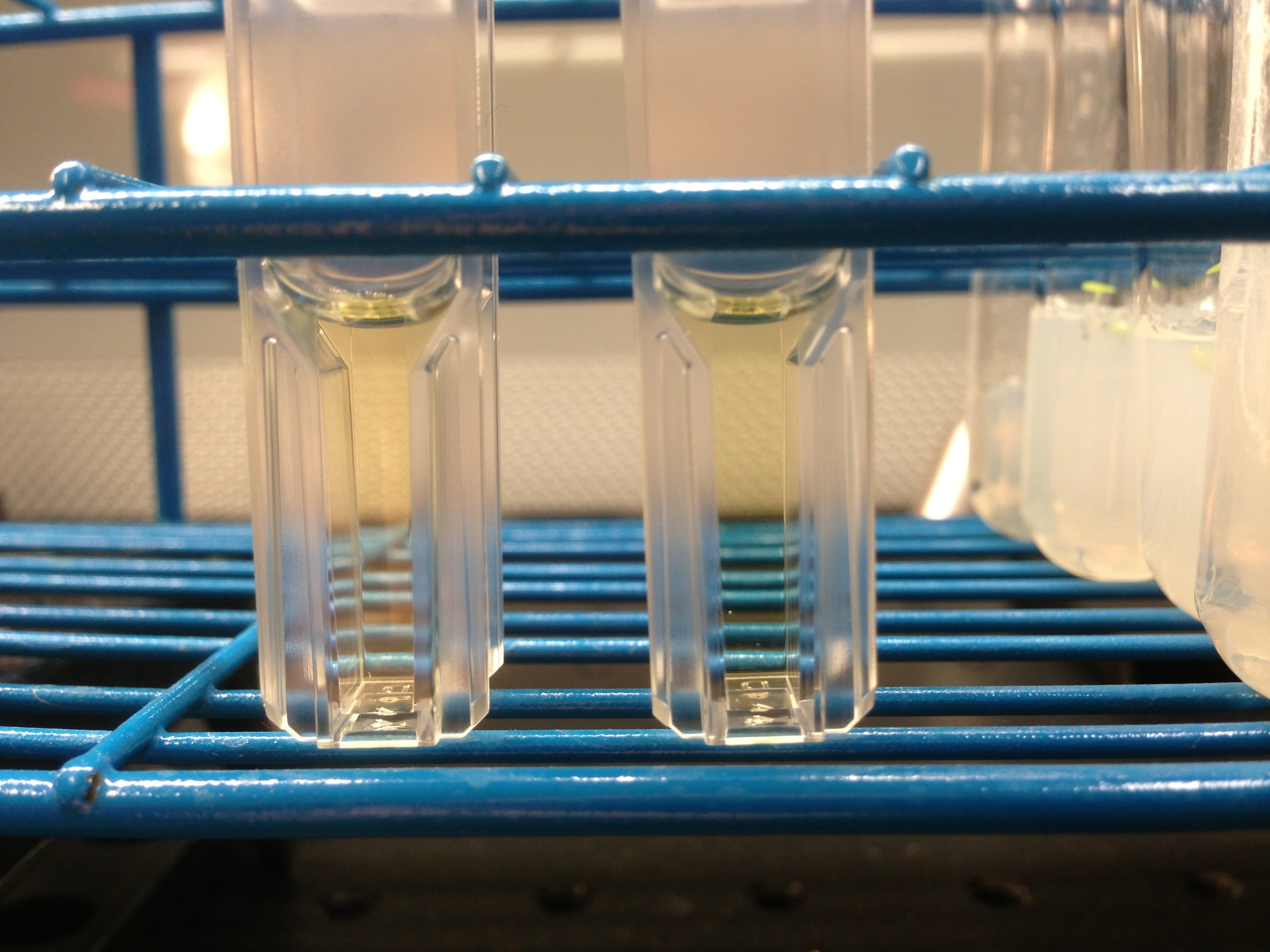I don’t believe I have time this semester to adapt Arabidopsis to D2O, but I might as well get started and hope I can carry out my experiments this summer and beyond. With that said, I’ll also be looking for morphological affects of D2O on the plants. So I’m starting the growth now and let’s see what observations I can make by March.
Cleaning the seeds (protocol provided by Pedro Nunes):
- Place seeds in microcentrifuge tube.
- Wash with 4:1 ethanol to bleach solution. (I used 1ml of this mixture)
- Let sit for 10 min.
- Pipette out mixture.
- Wash twice with 100% ethanol, and discard ethanol.
- Let the ethanol evaporate.
The seeds will sink to the bottom so it is fairly easy to pipette any liquid in the tube. After step 6 I’ll add some water so I can pipette the seeds into their growth media.
Preparing the growth media:
I originally intended to grow seeds in 5 different mixtures of D2O/DDW, but I spilled one so now I’m doing 4: 0% D2O, 10% D2O, 60% D2O, and 99.9% D2O (I spilled the 5% D2O mixture).
- Measure 50ml of D2O and 50ml of DDW
- Add 0.22g of MS media to each tube
- Mix water in 15ml amounts in small beakers/flasks
- 0% D2O – 0ml D2O, 15ml DDW
- 10% D2O – 1.5ml D2O, 13.5ml DDW
- 60% D2O – 9ml D2O, 6ml DDW
- 99.9% D2O – 15ml D2O, 0ml DDW
- Add 0.15g agar (to make 1% gel)
- Heat to dissolve agar
- Pour 5ml amounts into test tubes
- Allow to cool for gel to solidify
There are three samples per water mixture. Make sure you label your tubes.
Planting the seeds:
After cleaning the seeds use a pipetter to add 3 seeds to each sample. The seeds are small enough to fit in the tiny tips. I’ve read that you can place the seeds on the surface of the growth media, but in my (limited) experience that doesn’t work. As an alternative, I plunge the tip a few millimeters below the surface and drop the seeds there.
Like this:
Like Loading...
